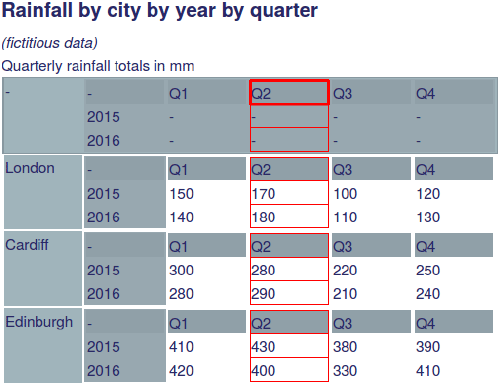Authors
Alan Hall, Michel Wermelinger, Tony Hirst, & Santi Phithakkitnukoon
Abstract
A spreadsheet is remarkably flexible in representing various forms of structured data, but the individual cells have no knowledge of the larger structures of which they may form a part. This can hamper comprehension and increase formula replication, increasing the risk of error on both scores.
We explore a novel data model (called the "lish") that could form an alternative to the traditional grid in a spreadsheet-like environment. Its aim is to capture some of these higher structures while preserving the simplicity that makes a spreadsheet so attractive.
It is based on cells organised into nested lists, in each of which the user may optionally employ a template to prototype repeating structures. These template elements can be likened to the marginal "cells" in the borders of a traditional worksheet, but are proper members of the sheet and may themselves contain internal structure.
A small demonstration application shows the "lish" in operation.
Sample

The figure shows some rainfall data broken down by quarter, year and city.
The top band of shaded cells is itself a two-dimensional table. Since this band is marginal it contains no actual data but rather acts as a template, forming the base plane for a stack of tables of the same structure.
Hence, we have a three dimensional array of data.
Publication
2017, EuSpRIG
